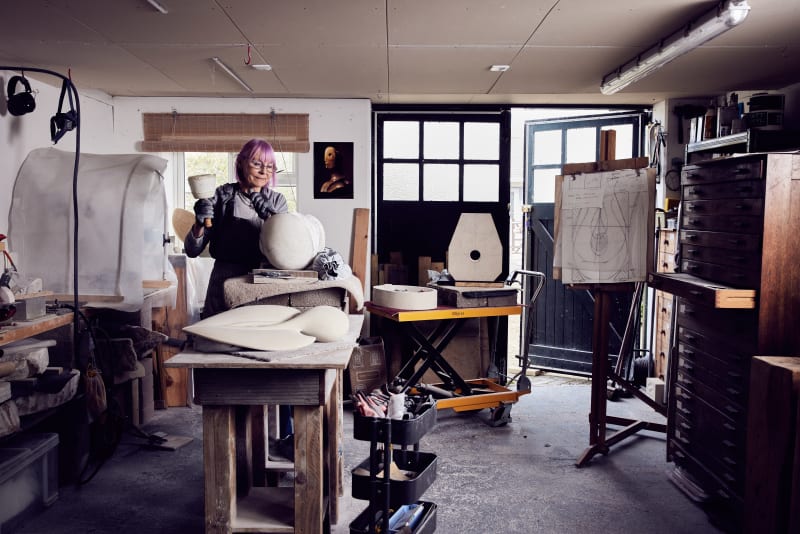It is about the simplicity and the clarity of form.
Jude 's graceful sculptures and carvings in stone depict a series of flowers, trees, seeds and other organic forms. The ephemeral delicacy of her subject is underlined by its translation into an immutable form. Time is halted - a moment preserved - in the sensitively rendered works.
Using a variety of different stones, Jude's intricate works celebrate natural beauty and form. Jude usually uses Ancaster weatherbed, alabaster and Caen for her pieces. A drawing on the stone is followed by carving, chiselling, polishing. The stone always carries its own history, cracks, sometimes fossils, all which are uncovered by her sculpting.
Jude travelled to India to learn how to work with alabaster. There she learnt the techniques and secrets from the masters. The way she uses alabaster is extraordinary. Her pieces can be extremely thin, almost like a leaf, allowing a magnificent transparency and luminosity.
As Ruskin said "… the spiritual power of the air, the rocks, the waters, to be in the midst of it, and rejoice and wonder at it…" For him, proper absorption in the landscape, in all its unbounded, unspoiled, awe-inspiring magnificence, could also bring about a form of self-healing, and increase our human contentment. A rock can be a landscape, a geological formation of years, and Jude marvels at bringing it out and making us aware of the inherent fabric.
Each stone reveals a secret. It may be a fossil, a different colouration, marks that would be invisible to the eye, revealed by the carving and polishing. Jude's pieces tempts us to touch the soft surfaces and sensual forms. The viewer is invited to experience their volume and softness.
Jude Tucker trained first in painting and later in life she studied carving at City and Guilds. It was there that we saw her works and we invited her to show with fellow student Patricia Swannell. Flowers from an Unknown Tree was their first show together in the gallery back in 2007. Jude is the first woman to have been commissioned to carve grotesques for St George's Chapel in Windsor.
